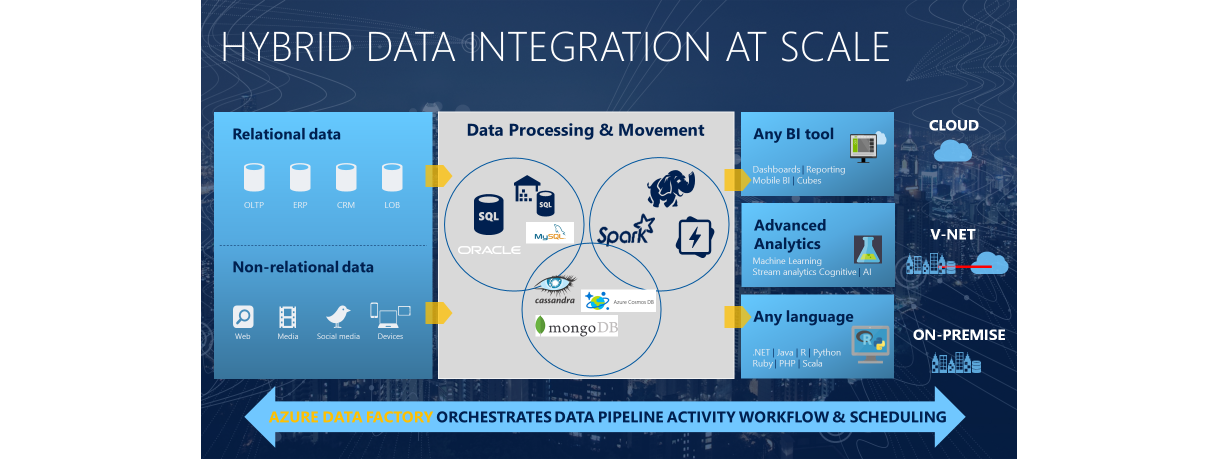Enterprises have data of various types that are located in disparate sources on-premises, in the cloud, structured, unstructured, and semi-structured, all arriving at different intervals and speeds.
The first step in building an information production system is to connect to all the required sources of data and processing, such as software-as-a-service (SaaS) services, databases, file shares, and FTP web services. The next step is to move the data as needed to a centralized location for subsequent processing.
Without Data Factory, enterprises must build custom data movement components or write custom services to integrate these data sources and processing. It’s expensive and hard to integrate and maintain such systems. In addition, they often lack the enterprise-grade monitoring, alerting, and the controls that a fully managed service can offer.
With Data Factory, you can use the Copy Activity in a data pipeline to move data from both on-premises and cloud source data stores to a centralization data store in the cloud for further analysis. For example, you can collect data in Azure Data Lake Store and transform the data later by using an Azure Data Lake Analytics compute service. You can also collect data in Azure Blob storage and transform it later by using an Azure HDInsight Hadoop cluster.

